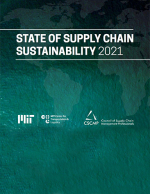Disrupting the Dominant Design of Procurement and Management
The North American TL transportation market is exceptionally large and highly complex; traditional methods for procurement, while very beneficial for many decades, are starting to fray at the edges.
Innovations in Transportation Roundtable
The 2019 Innovations in Transportation Roundtable invited three dozen shippers, carriers, and third parties to discuss and debate the relevance of the traditional manner in which truckload freight transportation is procured and managed as well as opportunities and challenges associated with the availability of new data.
This section describes some background on the current state of the TL market and the dominant design of transportation procurement and management.
State of the TL Market
The truckload (TL) market from fall of 2017 through most of 2018 was a roller coaster as capacity tightened and rates surged. Asked to describe their experience in one word, roundtable participants called 2018 “challenging,” and “volatile,” followed closely by “chaotic,” “expensive,” and “dynamic.”
Adding to the tightness was the phase-in of ELD (electronic logging device) mandates intended to help enforce truck driver HOS (Hours-Of-Service) regulations. This mandate effectively removed capacity from the market by reducing truck drivers’ flexibility — a euphemism for ability to cheat — on when and how much they drove each day. While shippers called it the worst of times, most carriers viewed it as the best of times.
While many pundits made claims that the challenging truckload market of 2018 was a fluke, calmer heads recognized it as just a repeat of a boomand- bust cycle that ripples through the truckload market every three to four years. In fact, by the end of 2018 and into the early part of 2019, it appeared that the market was already turning. Spot rates had subsided and shippers were finding it easier to get the capacity they needed.
One participant presented a graph of spot rates and contract rates over the last decade that revealed this depressingly consistent boom and bust oscillation. During times of tight capacity, spot rates surge and acceptance rates plummet. This is exacerbated by storms, holidays, and other disruptions. Some carriers (or their CFOs) are enticed to refuse loads that have older low contract rates in favor of loads that pay higher rates. In a desperate attempt to lock-in capacity, shippers offer higher contract rates, so these rates start climbing, too.
What’s Related




Favorites





